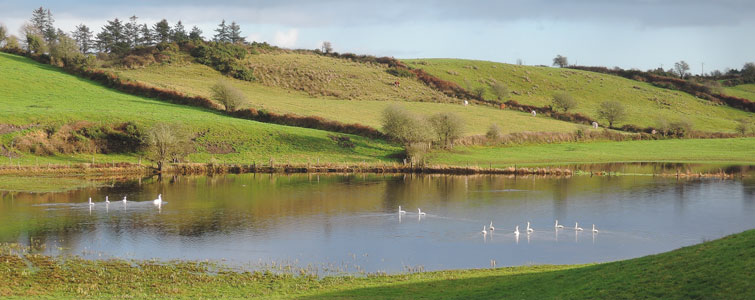Turloughs in County Mayo

The seasonal lakes called turloughs (in Irish a ‘place that dries out’) can be found in limestone area depressions and they are unique among European landscapes.
Their water levels fluctuate during the year. They are dry in summer and wet in winter. Usually they flood in autumn and start to drain in springtime, turning back into rich farmlands in summer.
Rainwater dissolves limestone rock exposed at ground surface and creates a honeycomb of underground channels. High rainfall fills the channels with water which spills upwards coming to the surface in low-lying basins and making the turloughs.
In winter turlough’s water is usually far from stagnant, there is a constant downwards flow, maintained by the rainfall.
An interesting mixture of aquatic and terrestrial flora reflecting the changing water levels can be found. Turloughs also support birds populations including whooper swan and golden plover.
Turloughs are a priority habitat under the EU Habitats Directive because they are only found in the west of Ireland and some of them are found in the south-east of county Mayo.
Did you know?
Turloughs have different structure and hydrology and flora can vary too.
The biggest is situated in South Mayo, near Shrule, which can cover more than 100 hectares, while one of the smallest is in North Mayo, near Ardkill, which floods no more 16 hectares. The turlough near Balla is building a peat area in its middle and so flora, which commonly grows in peatland, can be found there.
In wintertime Greaghans turlough, near Ballinrobe, is home to whooper swans which have brought seeds of a wetland cress from Iceland, now one of Ireland’s rarer species: the northern yellow-cress. Also Mayo’s turloughs are home to the rarest of Ireland’s damselflies, the Spreading damselfly, which it was thought extinct and discovered only in the 1990s.
